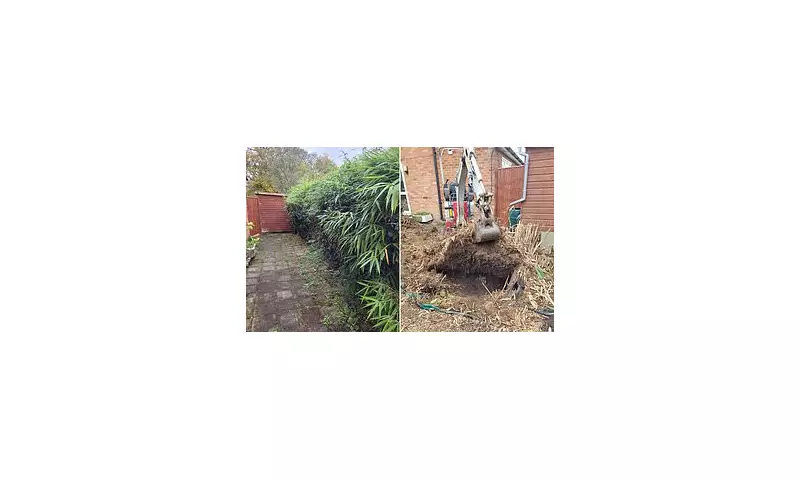
Residents in Britain's self-proclaimed bamboo capital are facing staggering bills running into thousands of pounds as the aggressive roots of this popular garden plant wreak havoc beneath their properties.
The historic Surrey town of Guildford, where bamboo became a landscaping trend during the late 1990s and early 2000s, is now confronting the severe consequences of this decision, with homeowners paying the price for the plant's relentless spread.
A Costly Garden Surprise
Tricia Cullimore, who moved into her Guildford home 25 years ago, initially adored the fashionable bamboo weaving along her garden boundary. She ultimately spent £5,000, shared with her neighbours, to address the problem after realising its true scale.
"The bamboo sat on the boundary with my neighbour," Ms Cullimore explained. "Last year my neighbour put a fence panel up and I suddenly realised how much it had spread. There have been odd bits of it popping up across the patio but I didn't realise how much it had grown."
The removal process was extensive, requiring an industrial digger and two full days of work to excavate roots reaching five feet deep. Her garden paving was destroyed in the process and remains unreplaced.
"The main thing now is I have to fill all the holes with earth to get it back to being a walkable area," she added. "I realise now I would stay clear of bamboo if I bought another property. I'm just glad we got it done when we did, it's a strong plant but a pretty plant, that's the trouble."
The Silent Super-Spreader
Despite not being officially classified as an invasive species in the UK, bamboo spreads faster and further than the notorious Japanese knotweed. The plant operates as a silent super-spreader, its underground stems called rhizomes invisibly burrowing vast distances before developing the strength to punch through solid surfaces.
Running bamboo varieties have evolved to colonise large areas rapidly, with roots frequently travelling over 10 metres. Their spear-like shoots possess enough force to pierce tarmac, paths, cavity walls, and exploit weaknesses in concrete or brickwork.
Emily Grant, Operations Director at invasive plant specialist Environet, said: "We see more cases of invasive bamboo in the Surrey commuter belt than anywhere else. There was clearly a bit of a local trend for planting it in the 1990s and 2000s and now homeowners are paying the price, as it often takes a decade or more for it to really start spreading and causing problems."
A Growing National Issue
Remedial work typically involves excavating the entire root ball and pursuing every lateral root, with costs averaging between £3,000 and £6,000 per property. Alarmingly, running bamboo remains readily available in garden centres, often without adequate warnings about its destructive potential.
Ms Grant advises: "It should never be planted directly into the ground – always put it in a sturdy pot lined with a bamboo-proof membrane and monitor it closely."
A YouGov survey commissioned by Environet revealed a significant knowledge gap among the British public. Over half of respondents were unaware bamboo could cause serious property damage or hinder property sales, while only 38% would be deterred from purchasing a property with a bamboo infestation, compared to 71% for Japanese knotweed.
Meanwhile, companies like Surrey Bamboo Removals are documenting the fight on social media, with their TikTok videos showing entire gardens being dug up and raising awareness about this escalating issue, which has garnered hundreds of thousands of views.





